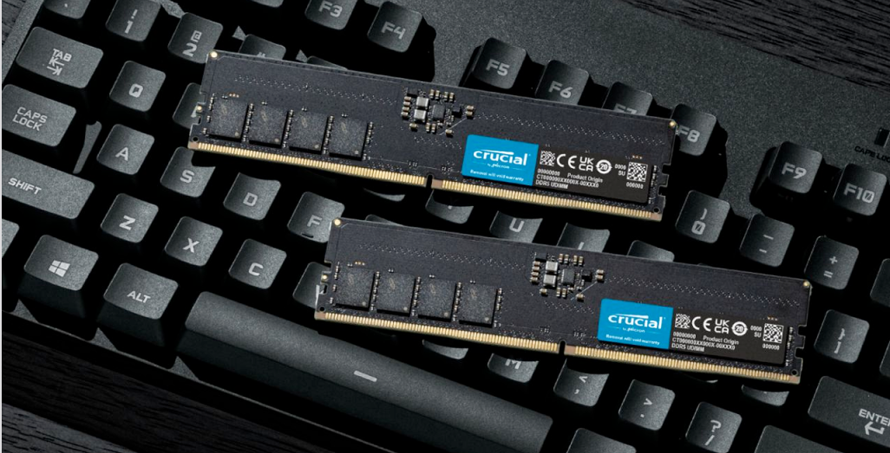
Micron Confirms PMIC and VRM Shortages Are Hampering DDR5 Adoption
Intel’s Alder Lake is the first mainstream platform with DDR5 memory support, but getting the appropriate memory modules is extremely hard due to an undersupply in some of the components, namely power management ICs (PMICs) and voltage regulating modules (VRMs). This week Micron confirmed the report and said that shortages of module components are slowing down adoption of DDR5. The company expects component scarcities to ease in the second half of 2022.
“Demand for DDR5 products is significantly exceeding supply due to non-memory component shortages impacting memory suppliers’ ability to build DDR5 modules,” Sanjay Mehrotra, chief executive of Micron, told investors and financial analysts at the company’s earnings call (via SeekingAlpha). “We expect these shortages to moderate through 2022, enabling bit shipments of DDR5 to grow to meaningful levels in the second half of calendar 2022.”
Traditionally, motherboards have been responsible for the voltage regulation of memory modules and carried appropriate PMICs as well as VRM circuitry. With DDR5, both PMICs and VRMs have been moved to the modules, which makes it easier to regulate voltages and lowers the complexity of server motherboards with over a dozen of memory slots. At the same time, the shift increases the complexity of memory module production, since DRAM houses now have to buy PMIC and VRM components separately. In a world already suffering from chip shortages, this is proving to be rather difficult.
Right now, companies like Micron and other DRAM makers car produce enough DDR5 memory chips, but shortages of these additional components are causing a constrained supply of actual DDR5 modules. This in turn greatly slows down adoption of the new memory type even by enthusiasts, who tend to spend more on their PCs than typical users.
PMICs for DDR5 memory modules are formally available from Renesas, IDT, Montage Technologies, and Texas Instruments. However, it looks like only PMICs from Renesas have been validated by Intel. Even Samsung, which announced its own PMICs for DDR5 DIMMs earlier this year, uses Renesas components for at least some of its modules.
When Intel introduces its mainstream Alder Lake processors early in 2022, demand for DDR5 will inevitably increase. Meanwhile, it will take Intel and its partners some time to ramp up adoption the platform, so Micron does not expect DDR5 shortages to worsen significantly in early 2022. Nonetheless, the tight supply of VRM and PMIC components will impact DDR5’s market share next year, and Micron only expects DDR5 to account for about 20% of compute DRAM bits shipments in 2022.